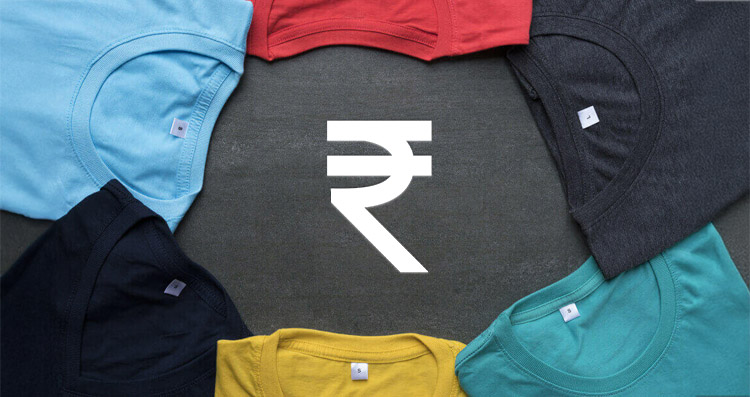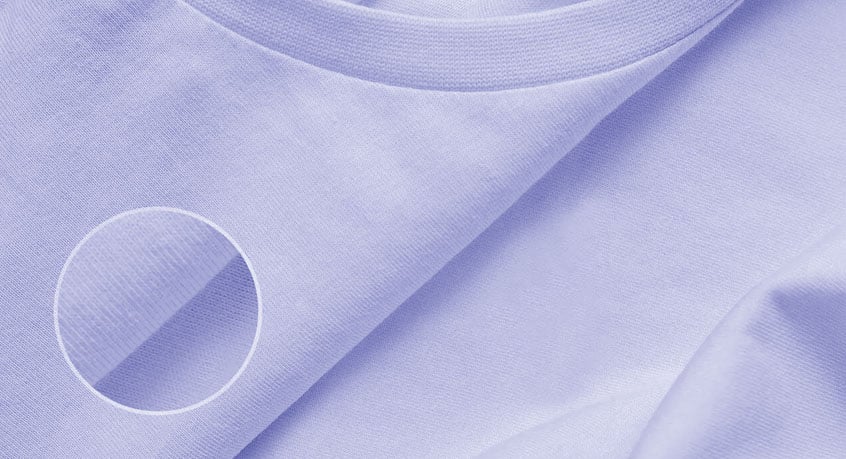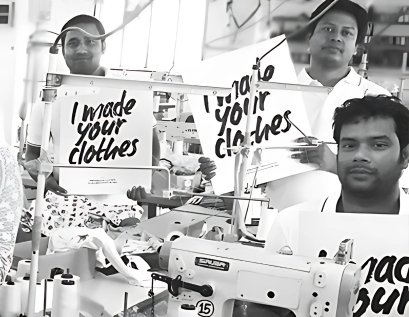5 Key Cost Factors for Your Custom T-Shirt Order

Ever Faced Sticker Shock with Custom T-shirts? Avoid These Custom T-shirt Order Cost Traps!
Imagine this: You have a big event or product launch approaching in just a month, and you are convinced that custom t-shirts are the perfect way to grab attention. You whip up a cool design, send it to a printer… and then you get the quote. Suddenly, your budget's out the window. Sound familiar? It's a common story—one that often boils down to misunderstandings about how custom t-shirt order costs actually work.
We have spent years helping businesses, nonprofits and up-and-coming apparel brands finalize everything from one-color staff tees to multi-color streetwear drops. Over time, we have seen the same five cost factors trip people up. In this guide, we will dissect those factors that inflate custom t-shirt order costs and reveal insider tricks to cut costs like a pro! So you can dodge common pitfalls and plan your custom t-shirt order with confidence.
1. Bulk Ordering: How It Reduces Custom T-shirt Order Costs
If there’s one piece of advice we’ve given more than any other, it’s: When in doubt, go bigger. Ordering more units at once often reduces the per-shirt price significantly. Yes, it sounds counterintuitive to spend more upfront—but in many cases, you’ll save overall.
How Bulk Ordering Works in Your Favor
- Economies of Scale: Print shops have setup costs (like screen creation or DTF alignment) that are distributed over your entire order. Ordering 200 t-shirts instead of 50 can dramatically reduce your per-piece costs.
- Negotiable Rates: Many printers offer tiered pricing at certain breakpoints: 25, 50, 100, 500, etc. Hitting those thresholds can lead to major discounts.
- Reduced Shipping & Packaging: Combine everything in a single shipment to avoid repeated shipping fees. That alone can save you a chunk of change—especially for heavier tees.
Real Anecdote: We once worked with a local festival that wanted to test 20 t-shirts in four different colors. After seeing the quote, they shifted to a single color for 80 t-shirts, cutting their total custom t-shirt cost by over 25%. The festival used the extra t-shirts for promotions throughout the year, so none went to waste.
2. Fabric Choice: How It Impacts Custom T-Shirt Order Costs
Not all T-shirts are created equal. The brand, fabric and style you pick can swing your custom t-shirt order cost more than you might expect. Some events just need cheap, cheerful cotton. Others demand tri-blend tees that showcase a premium, soft drape. Figuring out your sweet spot is a major piece of the puzzle.

Fabric Factors to Consider
- 100% Cotton: Typically budget-friendly and easy to print on. A standard Gildan or Fruit of the Loom tee can be a cost-effective choice if you want to keep it simple.
- Cotton-Poly Blends: Slightly more expensive but often more wrinkle-resistant and comfy. Great for team uniforms or casual brand merch.
- Performance Fabrics: Best for sports or outdoor events. However, they can bump up costs due to specialized moisture-wicking properties.
Pro Insight: We have seen plenty of success with 100% cotton tees in the 160–180 GSM range for a fundraiser or large group event. It’s a nice balance—sturdy enough to handle repeated washes but not so pricey that you blow your budget on the average cost of a custom t-shirt.
3. How Does Design Complexity Affect Your Printing Bill?
Many people assume it's the printing method alone that determines the custom t-shirt order cost. While screen printing vs. DTF vs. embroidery is a big factor, the complexity of your design also matters.
Breaking Down Design Complexity
- Number of Colors: Screen printing typically charges per color because each hue requires a separate screen. Meanwhile, DTF can handle multiple colors in a single pass but may cost more per piece depending on volume and film usage.
- Print Size & Placement: Front and back prints or added sleeve designs mean more ink, more screens, or more DTF film—each location you add can hike the final custom t-shirt printing cost.
- Fine Detail or Gradients: Photorealistic images demand specialized approaches. Embroidery, for instance, might struggle with super-small text. In screen printing, more intricate detail can mean more labor; in DTF, heavily detailed graphics can require higher ink usage and possibly extra film sections.
Anecdote: A sports team once asked for a six-color logo that spanned the entire front of a hoodie. Screen printing that design cost more than if they’d settled for a simpler, 2-color chest print. Ultimately, they chose a middle ground—reducing both size and colors—to match their budget, but the final design still looked fan-worthy. This gave them the best value for custom t-shirt design cost.
4. Printing Method: How It Impacts The Cost Of Custom T-shirts
Beyond design complexity, your chosen printing method plays a massive role in custom t-shirt order costs. Each approach—screen printing, DTF, embroidery or heat transfer—has its sweet spot depending on quantity, design detail and garment type.
Quick Overview of Common Methods
- Screen Printing
- Best For: High-volume orders with fewer colors. Vibrant, lasting prints if color counts are low.
- Watch Out: Setup fees for each color can get steep if you do small runs with a rainbow design.
- Direct-to-Film (DTF)
- Best For: Smaller batches or highly detailed, multi-color images. No separate screens are needed, so complex designs can be feasible.
- Watch Out: Per-piece costs can climb with large volume orders, especially if film and ink usage is high. Some fabrics require special pre-treat or careful film application.
- Embroidery
- Best For: Polos, jackets, or any scenario where a premium, tactile finish is desired.
- Watch Out: Complex or large designs (lots of stitches) can hike costs substantially.
- Heat Transfer or Vinyl
- Best For: Names/numbers on jerseys, ultra-quick short runs or specific vinyl effects (glitter, metallic, etc.).
- Watch Out: Large coverage can feel stiff and longevity might be lower than screen printing or DTF.
Pro Tip: If you need 500 tees with a 1-color logo, screen printing usually wins in affordability. But if you are aiming for 30 t-shirts with a multi-color or photo-like design, DTF might be more practical, even if the piece-by-piece price seems higher. Be sure to compare quotes to get the best deal on t-shirt order costs.
5. Do Deadlines and Rush Fees Impact Your Bottom Line?
It’s easy to overlook turnaround time until the event is a week away, and your printer usually needs two or three. Rush orders and expedited shipping can blow up your final invoice.
Managing Your Timelines
- Production Queue: Printers often schedule multiple jobs. If your order needs to skip ahead, labor costs or overtime might apply.
- Shipping Method: Paying for overnight or 2-day delivery can add a significant amount to your total, especially for heavier cotton tees.
- Proofing & Revisions: In a time crunch, there’s less chance to refine or correct artwork issues—potentially leading to misprints or reorders.
Mini Story: A restaurant owner realized one week before her big rebranding that staff needed new tees. The rush fee plus express shipping added a 20% surcharge. Planning just another week in advance would have cut those costs entirely and helped avoid unnecessary custom t-shirt order cost increases.
FAQ: About Keeping Custom T-shirt Order Costs Low
Below, we have answered a few of the most frequent cost-related queries that come our way:
It depends on your design. Screen printing might be cost-effective if you only have 2–3 colors. If you have a detailed or photo-like image, DTF can sidestep the cost-per-color issue—though per-piece rates for smaller runs might be higher. Always compare quotes from reputable shops to see what fits your custom t-shirt order cost best.
Common price breakpoints vary—25, 50, 100, 500, etc. Each printer’s tiers differ. Request quotes for each bracket (like 50 vs. 100 shirts) to see if the bigger batch lowers your overall cost.
Absolutely. Most printers allow a sample t-shirt or a partial run to check fabric type, print clarity, or color accuracy. It might cost extra, but it's safer than ordering 200 tees only to find the shade is off, or the design size is too small. This can help ensure you get the right cost of custom t shirt printing.
5 Practical Tips to Keep Your Budget Lean Without Sacrificing Quality
- Reduce Print Locations: Sticking to a single front design can trim costs compared to adding back or sleeve prints.
- Simplify Colors: Screen printing fees rise per color, so fewer hues = less setup time and lower overall pricing.
- Plan Ahead: Avoid rush fees by ordering at least three weeks in advance—especially if your order is large or your design needs proofs.
- Consolidate Orders: If you’re running multiple events over the next few months, grouping them into one bigger order might qualify you for a stronger bulk rate.
- Study Brand & Fabric: A mid-tier cotton tee might be all you need. Performance or tri-blend shirts are lovely but can inflate custom t-shirt printing costs more than you realize.
Conclusion: Finding Your Perfect Balance of Budget and Impact
Custom T-shirts stand out in branding, team spirit, and events—so it’s easy to see why they’re so popular. However, you can’t overlook these five cost factors if you want to get the most bang for your buck. By optimizing your order size, selecting the right fabrics and print method, managing design complexity, and planning ahead to avoid last-minute surcharges, you’ll keep your finances in line without settling for bland or forgettable apparel.
Ultimately, the best approach is to do a little homework, compare quotes, and communicate your vision to a trusted print partner. That way, you can craft t-shirts that truly resonate—both visually and budget-wise. Good luck and enjoy seeing your design come to life without those dreaded post-invoice surprises!
🚀 Ready to save big on custom t shirt orders? Get in touch with one of our apparel consultants at +91 965-454-6400—they will help you with your design, selecting the right fabrics & placing your order.


